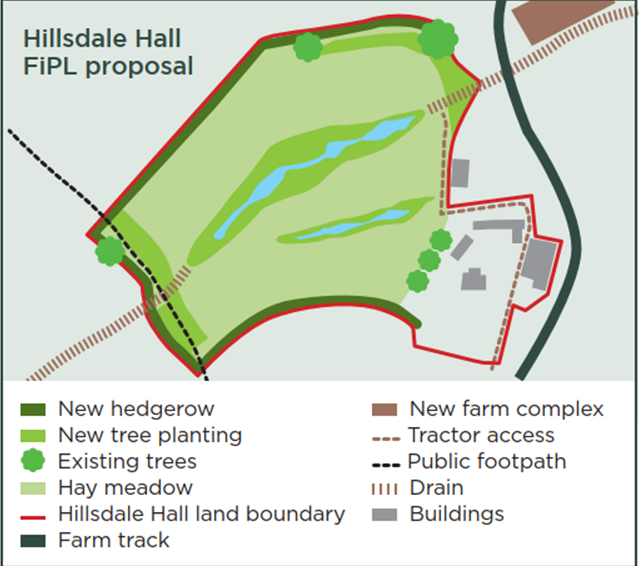Water / Case studies
# Removing culverts at Hillsdale Hall
As part of wider work conducted with assistance from FiPL (opens new window), culverts controlling the flow of water through Hillsdale Hall are being removed. They are due to be replaced with wetland habitats, supplemented with new trees, that will host a range of wildlife species. As well as creating more habitat, removing the culverts will slow the flow of water down to the river below which, when combined with new tree roots adding more structure to the surrounding soil, should reduce erosion and limit the amount of sediment darkening the water.
Despite the holding only being 3.1 hectares, this work is being done in addition to woodland and hay meadow creation on the farm. The FiPL programme has stepped in to support this work, as the land is too small to qualify for Higher Tier Countryside Stewardship funding. However, the example set here shows that, no matter how much (or little) space you have, no one is too small to make a difference and everyone can do something for Nature Recovery.
